
Welcome to CivilGEO Knowledge Base
Welcome to CivilGEO Knowledge Base

Welcome to CivilGEO Knowledge Base
Welcome to CivilGEO Knowledge Base
The Extract Cross Section Geometry command can extract the cross section geometry from an underlying elevation grid where there is valid elevation data. The software will automatically recognize the limits of the elevation data and extract the cross section geometry where this data exists. It will not try to extract the cross section geometry data where there is no valid elevation data.
For example, the underlying elevation grid might be of the river channel only. Previously, extracting the cross section geometry for this area required that the user define the channel bank stations at the limits of the elevation data and then extract the cross section geometry only for the cross section channel. If the user tried to extract the cross section geometry for the overbank areas, the overbank geometry would be flat.
Follow the steps given below to use the Extract Cross Section Geometry command:
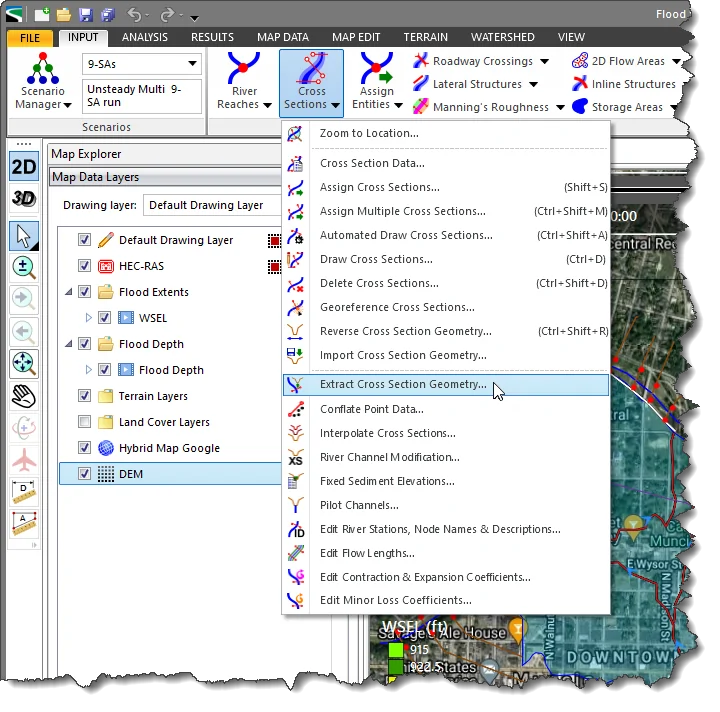
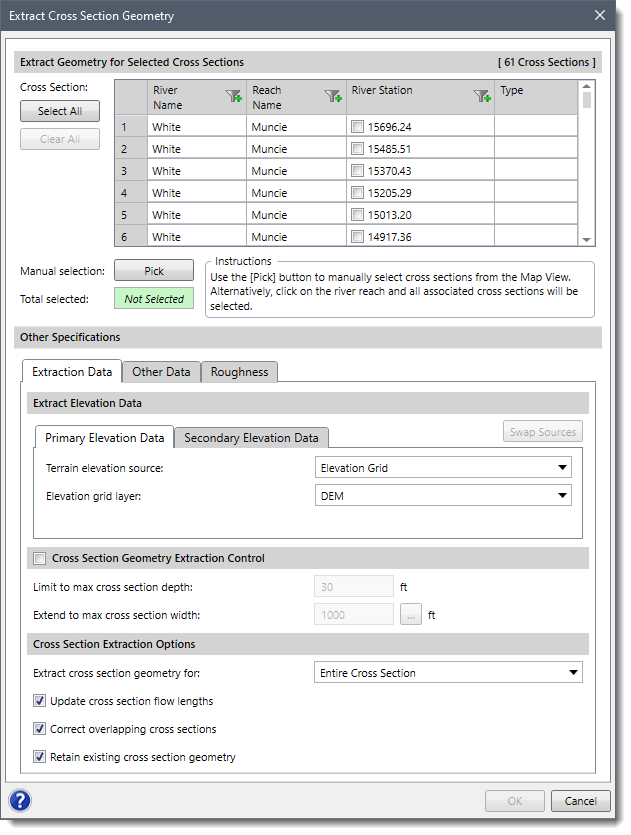
The following sections describe the Extract Cross Section Geometry command and how to interact with the above dialog box.
This section is used to manually select the cross sections for extracting geometry. If a cross section is already selected on the Map View prior to running this command, the same cross section will be shown selected within the table.
Alternatively, click the [Pick] button to interactively select the cross sections from the Map View. Clicking the [Select All] button causes all the cross sections to be selected. Clicking the [Clear All] button causes all the cross sections to be deselected. In addition, the user can sort out the specific river reaches to be shown in the table listing.
This tabbed panel is used to define the data extraction specifications for the selected cross sections.
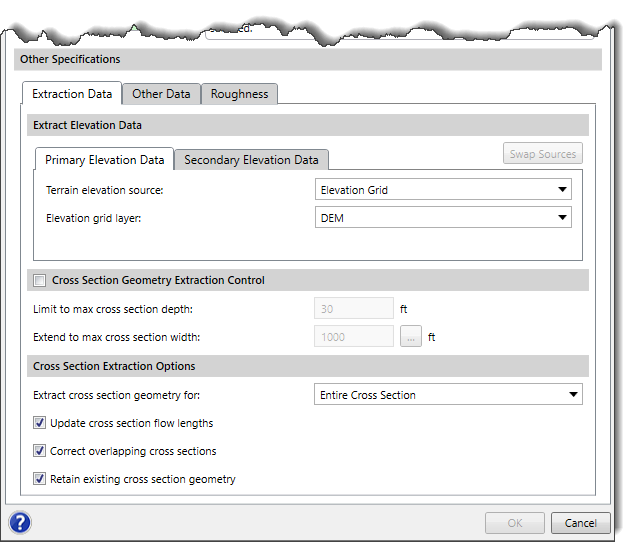
The Primary Elevation Data and Secondary Elevation Data panels of this section are used to define the primary and secondary (if available in the project) elevation data sources for extracting the cross section geometry. Depending on the selected elevation data source type, the content of these panels changes to specify additional elevation data information.
When a secondary elevation data source is available, the software forms a concave hull around the primary elevation data source to identify its bounds. For locations where elevation data from the primary data source is unavailable, the software will use the elevation data from the secondary data source.
Note that the user cannot utilize the same data source for defining the primary and secondary elevation data.
The user can click the [Swap Sources] button to swap the selected elevation source from primary elevation data to secondary elevation data and vice versa.
Refer to this article in our knowledge base for more information on the types of terrain elevation data that can be used for constructing cross sections.
This optional section is used to control the amount of the cross section geometry to extract for the selected polylines. This assures the user that adequately deep cross sections are created on both sides of the river reach. The software will attempt to retrieve the cross section geometry data to the depth specified within the maximum cross section width specified.
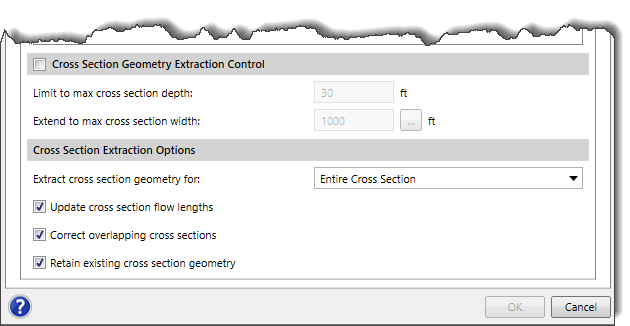
If the selected polylines do not extend far enough outward for the cross section depth specified, the software will automatically extend the cross sections. Similarly, if the selected polylines extend too far outward for the cross section depth specified, the software will automatically trim the cross sections.
This section is used to control what portions of the cross section(s) should be extracted.
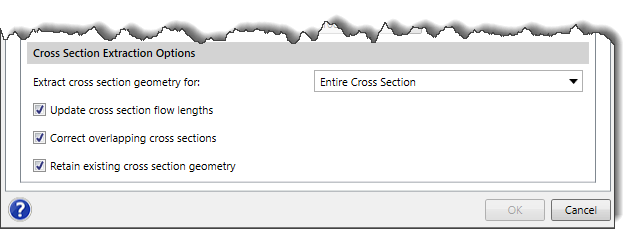
For example, the user may have survey data for the cross section channel and a LIDAR digital terrain surface for the overbank areas.
In this example, the user would only want to extract the cross section geometry for the overbank areas since the surveyed channel geometry is already accurate.
The Extract cross section geometry for the dropdown combo box entry contains the following options:
In addition, the cross section flow lengths are automatically updated.
This data panel is used to define channel bank locations based upon the options selected for the selected cross sections.
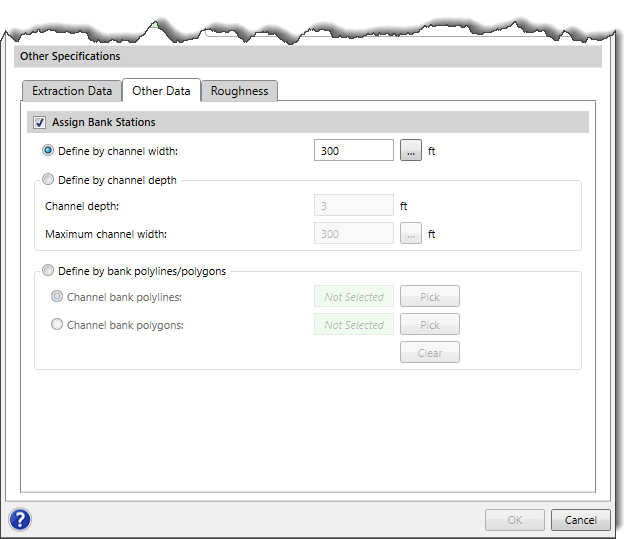
During the extraction of the cross section geometry, the software will automatically assign a default Manning’s roughness for the left overbank, channel, and right overbank areas. However, the user can adjust these Manning’s roughness values in the Roughness tabbed panel.
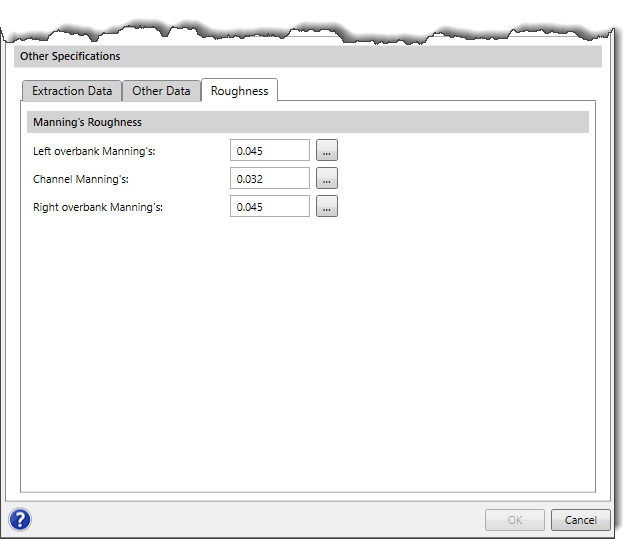
Note that, while defining the Manning’s n values, the user can click the […] button to display the Manning’s Roughness dialog box. This dialog box provides a reference to Manning’s roughness coefficients for some commonly used surface materials.
When all the options have been defined, click the [OK] button and the software will extract the cross section geometry from the elevation terrain.
 1-800-301-02-955
1-800-301-02-955
 608-729-5100
608-729-5100
(US and Canada)
 [email protected]
[email protected]
 +1 608-729-5100
+1 608-729-5100
CivilGEO India
Graphix Tower, A-13 A
3rd Floor, Sector 62
Noida, Uttar Pradesh 201309
IndiaTel:
1-800-301-02-955 or
+91 022-3831-8601
CivilGEO United States
8383 Greenway Blvd
6th Floor
Middleton, WI 53562
USATel:
608-729-5100 or
800-488-4110
Copyright © CivilGEO, Inc. All rights reserved. The CivilGEO logo, “GeoHECHMS”, “GeoHECRAS”, and “Ready To Engineer” are registered trademarks of CivilGEO,
Inc. All other brands, company names, product names or trademarks belong to their respective holders.
We use cookies to give you the best online experience. By agreeing you accept the use of cookies in accordance with our cookie policy.
When you visit any web site, it may store or retrieve information on your browser, mostly in the form of cookies. Control your personal Cookie Services here.
The ZoomInfo WebSights snippet drops three cookies to track Unique Visits:
1. _pxhd - Related to the Perimeter X security layer (Perimeter X isused to prevent bot attacks).
2. _cfduid - Related to the CloudFlare security layer (CloudFlare is the Network Security protocol that ZoomInfo uses to orchestrate the rate limiting rules).
3. visitorId - This is how WebSights identifies recurring visitors








